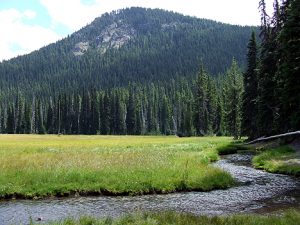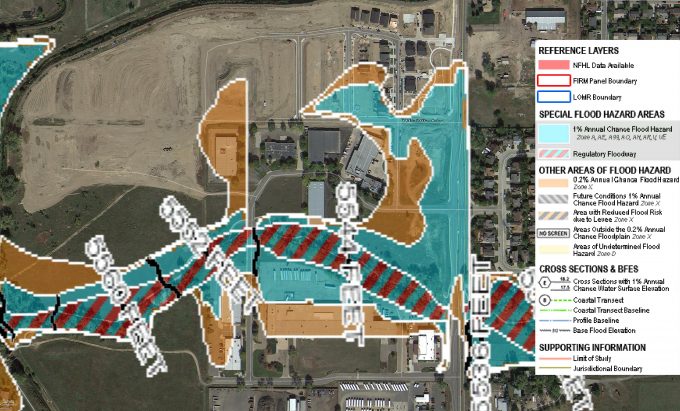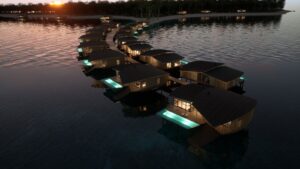 Recently, we were contacted by a client wanting to build a house in a beautiful open meadow. While this seems to be a great setting for the house, one issue arose when we started doing our due diligence. The location where they wanted the house was in a mapped FEMA floodplain. It can be confusing to understand all of FEMA’s floodplain designations and what can and can’t be done within them. So we are here to help.
Recently, we were contacted by a client wanting to build a house in a beautiful open meadow. While this seems to be a great setting for the house, one issue arose when we started doing our due diligence. The location where they wanted the house was in a mapped FEMA floodplain. It can be confusing to understand all of FEMA’s floodplain designations and what can and can’t be done within them. So we are here to help.
In general no new construction is allowed within a 100-year floodplain (an area where the chance of flooding is 1% in a given year). If you are buying an older home that is within a 100-year floodplain then you will have to purchase flood insurance. If you are looking into buying a parcel of land to build on or are buying an existing home it is always good to check out if flooding will be an issue. A great tool provided by FEMA (they manage the flood hazard mapping program) is their Google Earth Plug-in. The Stay Dry plugin is a basic look at floodplains, and the FEMA NFHL plugin breaks down their mapping into much more detail.
While looking at FEMA’s maps there are certain letter designations they give based on the type of flood hazard. To make it simple, if you are within Zone A (or any designation that begins with A) you are within the 100-year flood plain. Zone B or Zone X (shaded) are the areas of the 500-year flood risk (or 0.2% annual risk). Finally, Zone C or Zone X (unshaded) are all areas outside the 500-year flood plain.
If you find that the land you are looking at or just bought is within the 100-year floodplain, like the client mentioned above, you are not necessarily out of luck. FEMA provides certain processes that we can help you go through to get your project out of the floodplain. In the screenshot shown below is an area in Arvada, CO with FEMA’s NFHL plugin. The colored areas mean:
- Dashed Blue and Red: Regulatory Floodway. This is defined as the channel of a river or other watercourse and the adjacent land areas that must be reserved in order to discharge the base flood without cumulatively increasing the water surface elevation more than a designated height.
- Blue: 100-yr Floodplain (1% annual flood chance)
- Orange: 500-yr Floodplain (0.2% annual flood chance)
While not impossible, building within a regulatory floodway is the most difficult (and expensive) option a client could want. This would require a detailed study on how to change the channel shape so as to not affect the river elevation upstream or downstream of the project location. For streams and other watercourses where FEMA has provided Base Flood Elevations (BFEs), but no floodway has been designated, the community must review floodplain development on a case-by-case basis to ensure that increases in water surface elevations do not occur. The process to make changes to a floodway entails submitting an application for a Letter of Map Revision (LOMR). The definitions provided by FEMA are below. Once submitted and approved FEMA will issue a Conditional Letter of Map Revision (CLOMR), which states that if built to design they will issue the LOMR.
- Conditional Letter of Map Revision (CLOMR) is FEMA’s comment on a proposed project that would, upon construction, affect the hydrologic or hydraulic characteristics of a flooding source and thus result in the modification of the existing regulatory floodway, the effective Base Flood Elevations (BFEs), or the Special Flood Hazard Area (SFHA). The letter does not revise an effective NFIP map, it indicates whether the project, if built as proposed, would be recognized by FEMA. FEMA charges a fee for processing a CLOMR to recover the costs associated with the review. Building permits cannot be issued based on a CLOMR, because a CLOMR does not change the NFIP map.
- A Letter of Map Revision (LOMR) is FEMA’s modification to an effective Flood Insurance Rate Map (FIRM), or Flood Boundary and Floodway Map (FBFM), or both. LOMRs are generally based on the implementation of physical measures that affect the hydrologic or hydraulic characteristics of a flooding source and thus result in the modification of the existing regulatory floodway, the effective Base Flood Elevations (BFEs), or the Special Flood Hazard Area (SFHA). The LOMR officially revises the Flood Insurance Rate Map (FIRM) or Flood Boundary and Floodway Map (FBFM), and sometimes the Flood Insurance Study (FIS) report, and when appropriate, includes a description of the modifications. The LOMR is generally accompanied by an annotated copy of the affected portions of the FIRM, FBFM, or FIS report.
Now to the easier options. If the area you would like to build in has a regulatory floodway defined, but is within the blue area then there are two options. If you believe that your location was erroneously demarcated within the 100-year floodplain you can apply for a Letter of Map Amendment. This will require some surveying to certify that the elevation of your home is above the 100-year floodplain (base flood elevation), but there is no review or processing fee from FEMA to analyze the request. The other option is a Letter of Map Revisions – Fill (LOMR-F). This allows us as engineers to design your home at a higher elevation by bringing in fill material from offsite. Because the designated floodway was determined to have the capacity to carry the 100-year flood volume, filling anywhere outside that area will not affect the flood elevation adversely.
We know that it can be confusing to understand all of the processes described above, but hopefully this blog post helps. We would love to help more if you have an issue with a floodplain project, so feel free to contact us here at EVstudio.









